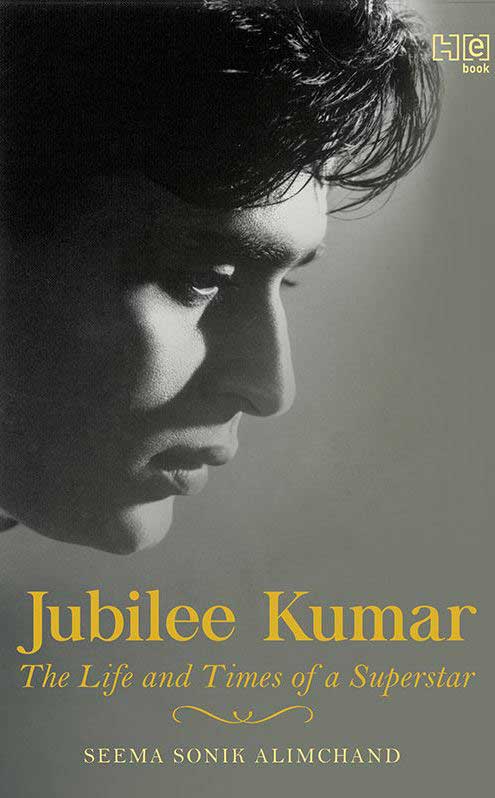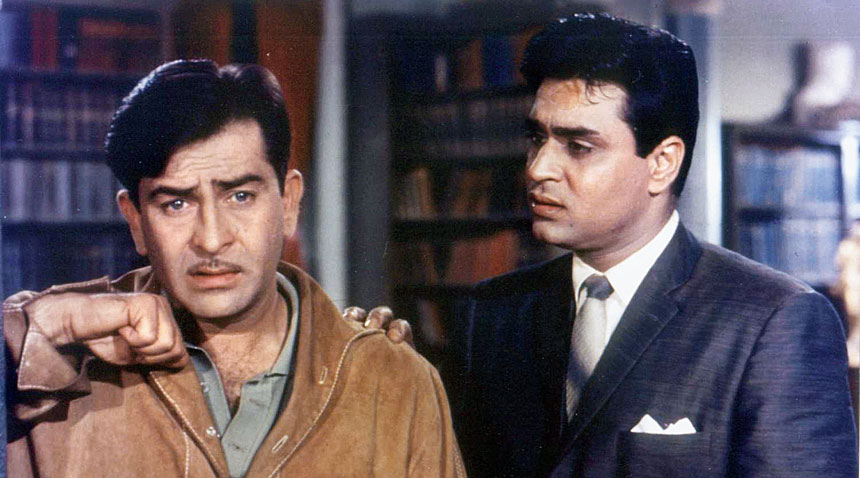For much of the Sixties, Rajendra Kumar strode the Hindi film world like a colossus. Therefore, it is surprising that not much has been written about the man whose film career lasted close to 45 years as an actor and a producer and whose life’s journey reflected the trials and tribulations of the generation affected by the ravages of Partition.
Seema Sonik Alimchand’s book on Kumar attempts to fill the void. Alimchand, who has seen the film industry up close, being the daughter of the music composer, Master Sonik, of the Sonik-Omi duo, traces Kumar’s journey from Sankhatra, a prosperous village near Sialkot (now in Pakistan), where the actor was born on July 20, 1927.
Kumar’s childhood was spent in affluence, growing up in a six-storey house with 42 rooms, but, as was the case with several families, Partition threw his life of privilege asunder.
The author narrates the struggles Kumar and his family members underwent before reaching Delhi and how, by a stroke of good luck, in early 1949, a friend from Sialkot took him to Bombay, the city of dreams.
Kumar’s film career started off as an assistant director with H.S. Rawail, but a chance meeting with movie mogul, Chandulal Shah, of Ranjit Studios landed him his first acting role, that of a friend of the hero, Dilip Kumar, in Jogan, which released in February 1950. Chance, in fact, played a big role in Kumar’s life. In 1952, he bumped into the director, Devendra Goel, at Famous Studios. The young film-maker recognized Kumar as the actor from Jogan and offered to cast him as his leading man.
Goel kept his promise and started Vachan two years later with Kumar and Geeta Bali in the lead roles.
Kumar in the meantime had got married to Shukla Behl, the cousin of a friend. Shukla’s influence on his life would be profound, like the time she made him sign up with Mehboob Khan for two films forsaking a lucrative deal with the Wadias that entailed a new Fiat car.
The first of the movies was a quickie called Aawaz and the second a magnum opus named Mother India.
Stardom would come to Kumar by the time he was 30 years old. And to celebrate that he bought himself a brand new Impala car.
Alimchand juxtaposes Kumar’s career post Mother India with that of the actor’s personal life: Rajendra Kumar didn’t have the usual trappings of a star; he was a family man who had dinner at home and found time for yearly holidays. By this time he had bought a magnificent bungalow on Tony Carter Road and named it after his daughter, Dimple.

A poster of the film, Humrahi Wikimedia Commons
Alimchand tracks Kumar’s hugely successful career that included films such as Goonj Uthi Shehnai, Dhool Ka Phool, Kanoon, Aas Ka Panchhi, Sasural, Zindagi, Dil Ek Mandir, Mere Mehboob, Suraj, Arzoo, and, of course, Raj Kapoor’s Sangam, all blockbusters that earned him the
Jubilee sobriquet. It would be that rare Rajendra Kumar film that wouldn’t complete a minimum silver jubilee run of 25 weeks at the box office.
The author discusses Sangam in great detail, how Kumar and Kapoor became the best of buddies as they hunted for the right leading lady and how Kumar had his way during the filming of the song, “Dost dost na raha”.
But all good things come to an end. The end of the Sixties saw the meteoric rise of Rajesh Khanna. Kumar, like many stars of his generation, found it difficult to adapt to the changing times. But because of his live-within-your-means philosophy, the actor never faced financial troubles.
His next task was to secure the future of his son, Kumar Gaurav, which he did by producing a movie called Love Story. It was a monster hit, helped by the music of R.D. Burman, but Gaurav wouldn’t be able to replicate his father’s success. There were whispers about Kumar’s interference in his son’s career but the star always denied that.

Jubilee Kumar: The Life and Times of a Superstar By Seema Sonik Alimchand,Hachette, Rs 599 Amazon
The book gives us glimpses of Kumar’s kindness. He helped a struggling actor named Manoj Kumar find his feet; kept his promise to a budding producer named J. Om Prakash that he would star in his first film; bailed out his mentor, H.S. Rawail, who was in financial problems, by paying Naushad the signing amount for Mere Mehboob; backed his wife’s cousin, Ramesh Behl, to help set up Rose Movies; and even met the Nobel laureate, Lord Bertrand Russell, at his Wales home in 1965 to coax him into appearing in Mohan Kumar’s Aman, which the polymath did.
But Aman also brought turmoil into the Kumar household amid rumours of an affair between the star and his leading lady, Saira Banu. The author has covered the episode in detail without being offensive to anyone.
Kumar’s final years were spent fighting cancer. Alimchand gives a poignant description of his last hours in the hospital, as he was preparing to return home — his palatial Pali Hill bungalow also called Dimple — to be with his family, but suffered a massive heart attack and passed away on July 12, 1999.
Kumar didn’t have any regrets save one: selling his beloved first home called Dimple to Rajesh Khanna for a paltry amount. Khanna found superstardom in that house which he renamed, Aashirwad.
One shortcoming of the book is that given the quality of music in Kumar’s movies, the author could have provided some insight into his equation with music composers, particularly Shankar-Jaikishan, Ravi and Naushad, lyricists, and singers, especially Mohammed Rafi. But this is the only jarring note in what is otherwise an engrossing work which reveals the man behind a superstar whose films often reflected the social trends of a country that had just begun to find its voice.










